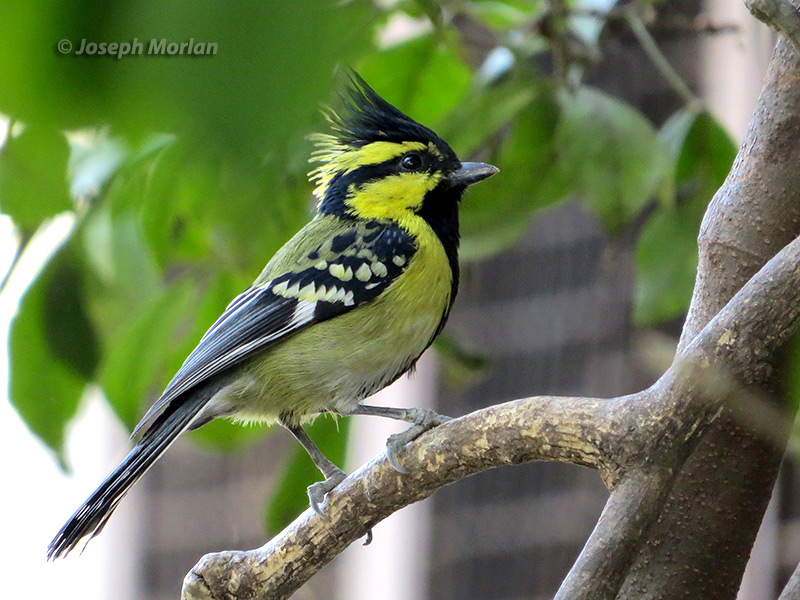
Himalayan birds such as this have yellow wing-bars while the peninsular population has white wing-bars. IOC uses the English names Himalayan Black-lored Tit and Indian Black-lored Tit respectively while Rasmussen & Anderton use Black-lored Yellow Tit and Indian Yellow Tit. Here I follow Clements/eBird and IOC in separating Himalayan birds from Indian Tit (Machlolophus aplonotus) of the Indian peninsula. Rasmussen & Anderton note that the two species have very different vocalizations and Indian Tit is sexually dimorphic. However neither H&M nor HBW have followed suit, still treating both as one polymorphic species. These colorful birds formerly were included in the genus Parus, but most recent authors have followed a recommendation by Johansson et al. to change its genus to Machlolophus which forms a distinct clade. Rasmussen & Anderton and Oriental Bird Club are notable exceptions retaining this species in Parus. Canon PowerShot SX50 HS.
References:
Gosler, A., Clement, P. & de Juana, E. (2016). Black-lored Tit (Parus xanthogenys). In: del Hoyo, J., Elliott, A., Sargatal, J., Christie, D.A. & de Juana, E. (eds.). Handbook of the Birds of the World Alive. Lynx Edicions, Barcelona. (retrieved from http://www.hbw.com/node/59904 on 6 July 2016).
Johansson, U.S., J. Ekman, R.C.K. Bowie, P. Halvarsson, J.I. Ohlson, T. Price & P.G.P. Ericson (2013) A complete multilocus species phylogeny of the tits and chickadees (Aves: Paridae). Molecular Phylogenetics and Evolution 69:852-860.
Rasmussen, P.C. & Anderton, J.C. (2012) Birds of South Asia. The Ripley Guide. Vols. 1 and 2. Second Edition. Smithsonian Institution. Michigan State University & Lynx Edicions, Washington. D.C., Michigan & Barcelona.